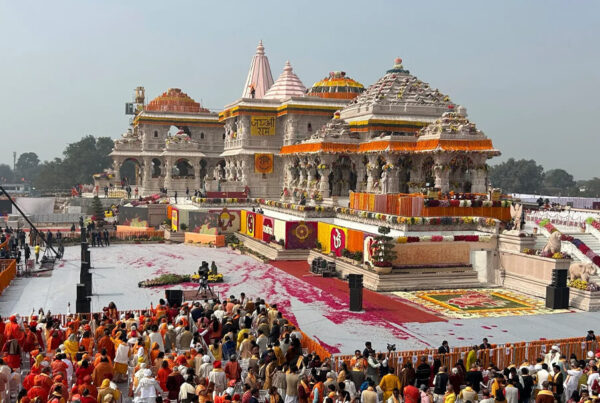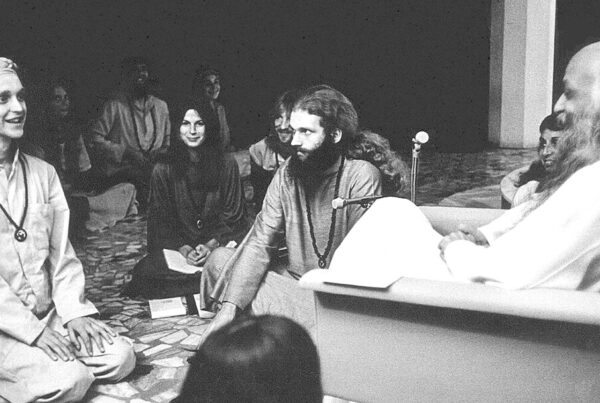
Reference: Pilgrimage
I have not been able to write on time for the past two weeks. Invitations have come from many places in India to conduct training camps and satsangs. My taste is not in cities at all. Rasa (juice) is in the Tirtha (holy places) and what I request to all the friends who send invitations for the camps is to keep the camps in all the Tirthas because the mind also rejoices in the holiness there and the meditation of the sadhaks also deepens in the energy there. Sadhana camps are conducted every year from Uttarakhand to Janakpur and Lumbini, from Gangasagar to Jagannathpuri.
Pilgrimages have a deep influence on our culture and state of mind. All religions do not worship idols, like Islam. Buddhists and Jains were also initially opposed to idol worship, but they too could not survive without pilgrimage. Even if you don’t believe in idols, you build a shrine and accept it. No religion can exist without pilgrimage. Mohammad Sahab also made a provision to keep Islam organized by traveling to Mecca once a year and performing Hajj. Buddha also said before leaving the body, ‘even after I am gone, devotees will travel to Lumbini, Bodh Gaya, Sarnath and Kushinagar and experience my profound presence there.’
Despite its external culture, religious, political and military migration, the pilgrimage has a great contribution in preserving this culture. If Adi Shankaracharya had not established 4 shrines in the four corners of India, Badrinath, Jagannathpuri, Rameswaram and Dwarika, the vast nation of India, full of such diverse languages and customs, would not have been able to exist as a national unit. Pilgrimage creates an emotional unity in the nation and builds a bridge of mutual harmony and friendship. Therefore, a person who reaches Rameshwar, no matter what country he comes from, remains only a devout pilgrim, not a foreigner, and when a person from South India reaches Pashupati, he is not Tamil or Kannada, he is only a Hindu.
All the followers have their own centers of worship and shrines. As luck would have it, my Guru opened the doors of all pilgrimages for me and connected me with all religions and gurus. For that reason, as much as I can rejoice in Vrindavan, the place of Krishna’s leelas, Bodhgaya, the place of Nirvana of Buddha, and Pawapuri, the place of Mahavira Nirvana of Mahavir, I am as happy as Nizamuddin Auliya’s Dargah in Delhi, the Dargah of Garib Nawaz Chisti in Ajmer, and the Golden Temple in Amritsar. Osho has connected me with an intimate relationship with all these religious gurus and after visiting their shrines, I feel very powerful spiritual energy waves coming to my own supreme abode and I find evidence of receiving spiritual nourishment, confidence and inspiration from these sadhgurus. Osho has personally told me, ‘go to such energy fields and do sadhana camp. That will make your meditation easier and the campers will also be happy. There “you don’t just reap the harvest of spirituality, you also plant its saplings for the generations to come.” Therefore, when a seeker enters a shrine, he receives a personal greeting that an ordinary tourist cannot experience as he comes out of devotion not entertainment. That’s why almost everyone who goes to pilgrimage with me says that we don’t have such a deep feeling when we come alone than we do when we come with you. To be related to the energy field of the shrine, a heartfelt harmony should be made. A person who goes to the pilgrimage and performs puja quickly, and comes hurriedly after completing the rituals, cannot experience that. That is why our forefathers made a rule that after going to a pilgrimage, we must spend a few nights there, because in the awake state our foolish mind does not allow any deep work to be done on us. But when we sleep our innocent unconscious becomes active and it becomes easier for the perfect consciousnesses present in the shrine to work on it. The depth and quality of sleep in a pilgrimage is not possible anywhere else in the world. It rains everywhere in the world, but sometimes it rains more and sometimes less. Similarly, Consciousness is everywhere, but the density of consciousness is less in some places and more in some places. It has been used collectively for thousands of years to increase the density of consciousness. These places are pilgrimages.
There are many thugs, pandits, priests and people who run a network of exploitation in the name of religion. The atrocities committed by pandits in our religious centers like Vishwanath temple in Banaras, Kali temple in Kolkata, Lingaraj temple in Bhubaneswar and Jagannath temple in Puri have reached criminal limits. I go to Kolkata almost twice a year. In Ramakrishna’s Belur Math, one feels peace and happiness and one wants to stay there for hours, but due to the outbreak of pandits since twenty years ago in the famous Kali temple in Kolkata, even today one does not want to go there.
Usually, ninety-nine sadhus out of a hundred are fake, lazy, and run away from the struggle of life to beg through religion. A true sadhu avoids preaching. I am disappointed when I meet the pretentious and famous sadhus because all their fame is based on propaganda and their material ambitions are also at its peak. From a distance, they seem very attractive, but when you get closer, the true seeker feels disgusted and disappointed by them. That’s why there is a proverb in Hindi, ‘Rad, Saad, Sidhi, Sannyasi inse bache to seve Kashi!’ meaning ‘Widows, Bulls, Spiritual Powers, Saints, Save us from them so that we can reach Kashi!’


